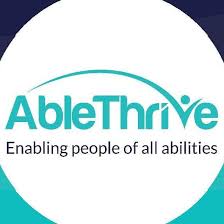|
Beth’s Harvard coach requested that she meet a little girl with a physical disability from a local club team. They swam together twice. Beth dabbled a little in coaching and talked to the girl and her mom over dinner. A Paralympic swimmer in Michigan also asked Beth to mentor a teenage girl with a new spinal cord injury. Ongoing friendships included her first mentee from Seattle who visited Harvard for a college visit almost four years after they began to exchange emails. They met face-to-face for the first time and caught up over lunch in Harvard Square.
Beth’s web of connections kept growing. My new Massachusetts doctor sent me to chronic pain classes at the Benson-Henry Institute for Mind Body Medicine. The institute was founded by Dr. Herbert Benson, the cardiologist who wrote The Relaxation Response. I drove east on Rt. 9 to Roxbury, a suburb of Boston. A nurse led the classes, teaching us about the science of meditation and how those who meditated regularly experienced significant health benefits. My diverse classmates experienced a wide range of medical problems. The nurse encouraged us to accept pain, the same concept that angered me when I first heard it in Ohio. Since then, I had found no cure for my headache. I understood that resisting pain did nothing good. Dr. Benson visited my class and spoke about pain as a benign thing, to separate it from our identities. To enable us to drain its power. To prevent pain from diminishing our experience of life. To make it an inescapable reality more than an obstacle. To make peace with multiple causes of pain, some clear and some not. I tried. I completed homework and daily meditation practice. At our last class, we shared unanimous results. All of us improved, including me, though our actual pain levels stayed the same. What? Across the board, our minute by minute and hour by hour responses to pain improved, enabling us to cope better day to day. The class also helped me gain perspective as I met others with debilitating pain. It could always be worse. Next: “Chomp!”
9 Comments
After Brazil, Beth flew into Boston, since our Ohio days were over. She helped me complete her new bedroom with a blue duvet cover and throw pillows. Before her senior year of college began, I often drove her to Harvard's Blodgett pool for workouts, about a half hour drive from our apartment in northwest Waltham. Maria joined Beth at the Bear Hill pool to sunbathe with books and to swim.
John’s change in jobs left us with a one-month gap in our health insurance. He bought coverage through his Ohio retirement at a reasonable cost. Against his advice, I decided to go without health insurance through August to save us several hundred dollars. As luck would have it, I couldn’t stop coughing with a persistent chest cold. I should’ve gone to the doctor. Instead, I waited another week until my new insurance started. A bad idea. I learned a new lesson. My lung capacity diminished with a full-blown, miserable, and intense pneumonia. For the first time, I experienced the anxiety triggered by not breathing easily. Antibiotics had no effect the first two weeks, so a lung doctor added steroids, inhalers, and a different antibiotic. I felt a little better by the end of September, in time for visitors. Still coughing, I assumed that a month of antibiotics had eliminated the possibility of being contagious. My parents arrived for a visit with my niece Meghan and her husband. We walked part of Boston’s Freedom Trail and rode a trolley. When others boarded a boat for a harbor cruise, I shared ice cream with my dad at Legal Seafood near a big aquarium. Maria and Beth visited us at our Waltham apartment for fun family dinners. After the visit, my dad contracted pneumonia—probably from me. He spent a rough week in an Ohio hospital, and I felt awful about it. My pneumonia completely cleared three months later and left me with elevated neck and head pain from the prolonged coughing. Next: A New Treatment! The aquatic center at the Parapan American Games, built to hold about 8,000 people, attracted capacity crowds. It was August of 2007, and Beth’s first competition in front of an enormous and enthusiastic audience. She chose the forward freestyle during free races instead of the backstroke of most of her competitors in the S3 classification.
In both the 100 and 200 free, she earned silver medals. Beth swam the 50 free in prelims with a time five seconds slower than usual after a freak injury. She dislocated her big toe falling into the pool. She felt less discomfort than I would have in the same situation, but pain nonetheless. Beth’s body also quickly reacted with strong leg spasms that dragged her speed down during the race. Right after, the team doctor for the USA manipulated the toe back in place. She returned to the pool that evening for finals to earn a bronze medal in the same event. With the forward freestyle, Beth drew a breath on the right side on every other stroke, so she could see a swimmer only in the lane to her right—if they swam at a similar speed. Legs dragged behind her, as always, but after years of strengthening and positioning her trunk, her legs stayed close to the surface of the water instead of angling all the way down where they would slow her down more. Another day, Beth’s 50 back ended unexpectedly. Her double-arm backstroke technique continued to be faster than alternating arms. In a close race, she touched the wall before all of the rest, including the swimmer from Mexico who held the IPC World Record for the event. I wish I had been there. During the medal ceremony, Beth wheeled on a ramp to the tallest stand. Wearing gold around her neck and holding beautiful flowers, she rode a wave of emotion and patriotism as the USA national anthem played loudly—for her. Spectators treated the swimmers like celebrities, cheering loudly when Beth gave her flower bouquet to a local girl in the stands. “Hearing our national anthem while on the podium is something I will never forget,” Beth said. “Rio was an absolutely amazing experience.” Next: Back to the real world! The Parapan American Games are held once every four years. In August of 2007, the games took place in Rio de Janeiro.
That year, Brazil hosted 1,150 athletes from 25 countries. When the team landed in Rio, security hurried them from the plane to the terminal because of gang shootings across the runways. They arrived early for swim training and to get over jet lag. Beth’s coach, Peggy, led the U.S. Paralympics Swimming Team as Head Coach for the first time. The team of 14 swimmers voted Beth Co-Captain. Julie O’Neill, promoted to the top spot in U.S. Paralympics, told an Ohio reporter, “Beth just has a great personality. She’s dedicated, intelligent. She’s got all these pieces, and she’s one of the athletes we look to for leadership.” “She’s an incredibly positive person,” Peggy added, “and it rubs off on people she comes in contact with.” Peggy led team-building activities, a few repeated from Beth’s high school and SAK teams. Out of the pool, one involved dividing into groups and picking one in each to chew the most gum as quickly as possible. In the pool, Beth grabbed the ankles of a swimmer ahead of her as they raced a lap. The team played water polo in the deep end while Beth bobbed and treaded water. They also raced with funny strokes. I followed the trip in email newsletters from U.S. Paralympics. They included quotes from the athletes, including Beth. “I am really excited about being here, and I am very honored to serve as the captain for the women’s team. It is a great learning experience for all of us.” |
Cindy KolbeSign up for my Just Keep Swimming Newsletter by typing your email address in the box. Thanks!Categories
All
Archives
November 2022
|





 RSS Feed
RSS Feed











